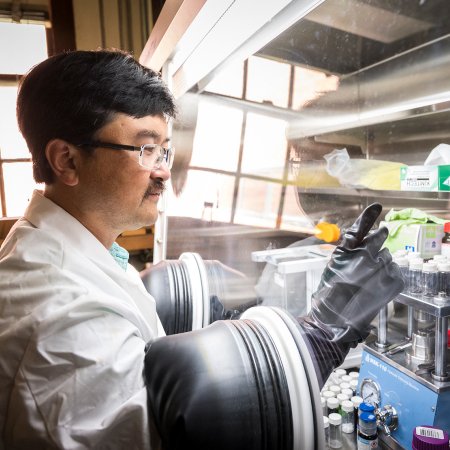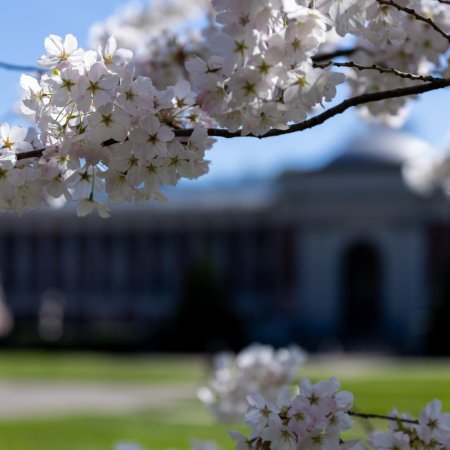New test to spot fake malaria drugs could save thousands of lives
OSU chemists and students in science and engineering have created a new type of chemical test that’s inexpensive, simple and can predict the authenticity of primary malaria drugs– an enormous and deadly problem in the developing world.
The World Health Organization has estimated that about 200,000 lives a year may be lost due to the use of counterfeit anti-malarial drugs. When commercialized, this new OSU technology may be able to address that problem by testing drugs for efficacy for just a few cents.
When broadly implemented, this might save thousands of lives around the world every year. Experts say that similar technology could also be developed for other types of medications and diseases.
Findings on the new technology were just published in Talanta, a professional journal.
“There are laboratory methods to analyze medications such as this, but they often are not available or widely used in the developing world where malaria kills thousands of people every year,” said Vincent Remcho, a professor of chemistry in the College of Science and Patricia Valian Reser Faculty Scholar, a position that partially funded this work.
“What we need are inexpensive, accurate assays that can detect adulterated pharmaceuticals in the field, simple enough that anyone can use them. Our technology should provide that.”
The system created at OSU looks about as simple and is almost as cheap as a sheet of paper. But it’s actually a highly sophisticated “colorimetric” assay, or test, that consumers could use to determine whether or not they are getting the medication they paid for – artesunate - which is by far the most effective drug used to treat serious cases of malaria. The assay also verifies that an adequate level of the drug is present.
Researchers have found that more than 80% of outlets are selling counterfeit pharmaceuticals at some places in the developing world. For example, one survey found that 38-53% of outlets in Cambodia, Laos, Myanmar, Thailand and Vietnam had no active drug in the product that was being sold. Artesunate, which can cost $1 to $2 per adult treatment, is considered an expensive drug by the standards of the developing world, making counterfeit drugs profitable since the disease is so prevalent.
Besides allowing thousands of needless deaths, the spread of counterfeit drugs with sub-therapeutic levels of artesunate may encourage the development of new strains of multi-drug resistant malaria, causing global impacts. Government officials could also use the new system as a rapid screening tool to help combat the larger problem of drug counterfeiting.
The new technology is an application of microfluidics, in this instance paper microfluidics, in which a film is impressed onto paper that can then detect the presence and level of artesunate. A single pill can be crushed, dissolved in water, and indicate the presence of the drug by turning yellow when a drop of solution is placed on the paper. The intensity of the color indicates the level of the drug.
Note: This approach (see image at right) is used to prepare a paper assay that can determine whether a common drug used to treat malaria is genuine.
Students create iPhone app to detect counterfeit malaria drugs
Both chemistry and computer science undergraduate and graduate students working in Remcho’s lab took the system a step further, creating an iPhone app that makes the technology more accurate. The app measures the color and indicates with an even higher degree of accuracy the presence and level of the drug.
The technology functions similar to that used on computers and expensive laboratory equipment, but is much simpler and less expensive. As a result, this approach may significantly expand in medicine, scientists said.
Computer science students Kyle Casare, Kevin Hess and Joe Runde in addition to chemistry students Chadd Armstrong, Chris Heist, and Tony Boonloed worked on the app technology that makes the information easily accessible to the general public.
“Because it is a consumer-grad application, we could even develop an app for anything you can collect a range of data points for and then create a curve of the results,” explained Heist.
Read more about what the students learned from their time in the lab.
Colorimetric tests have already been developed to measure many biomarker targets, Remcho said, and could be expanded for a wide range of other medical conditions, pharmaceutical and diagnostic tests, pathogen detection, environmental analysis and other uses.
“This is conceptually similar to what we do with integrated circuit chips in computers, but we’re pushing fluids around instead of electrons, to reveal chemical information that’s useful to us,” Remcho said.
“Chemical communication is how Mother Nature does it. And the long-term applications of this approach really are mind-blowing.”
With a proof of concept of the new technology complete, the researchers may work with OSU Advantage—an incubator for startup and early stage organizations—to commercialize the technology, ultimately with global application. OSU Advantage connects business with faculty expertise and student talent to bring innovative new technology to market quickly.




